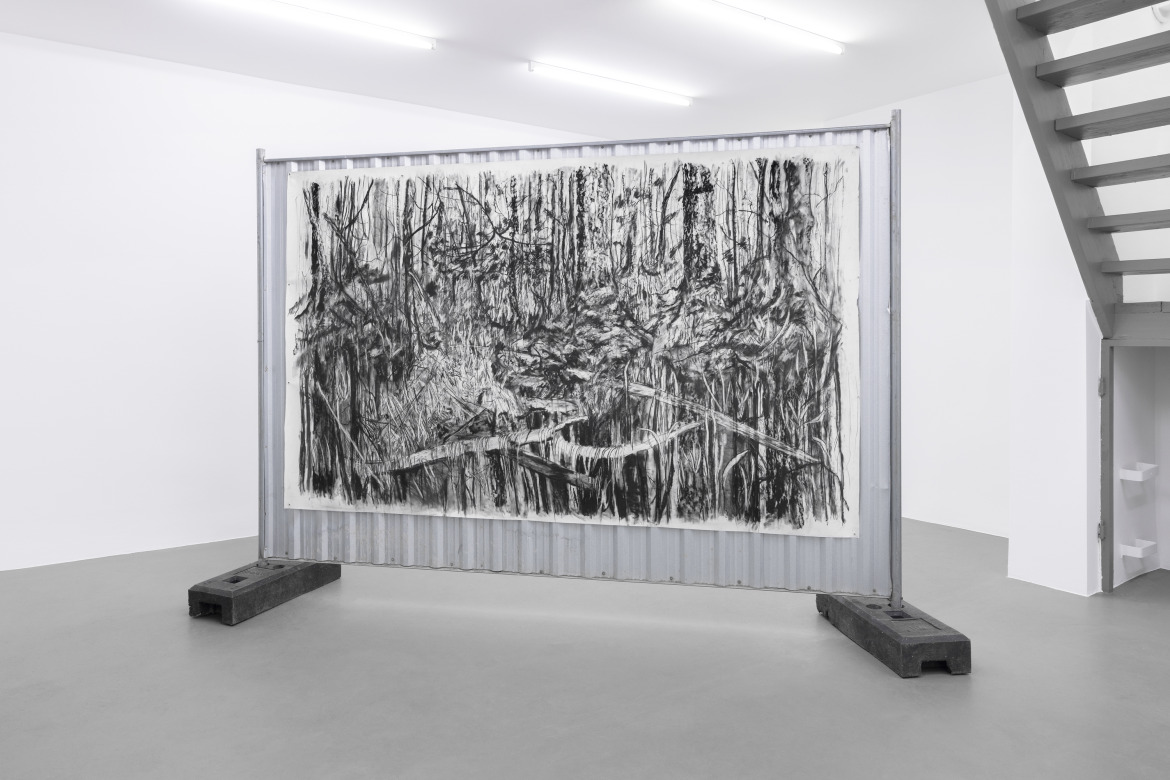
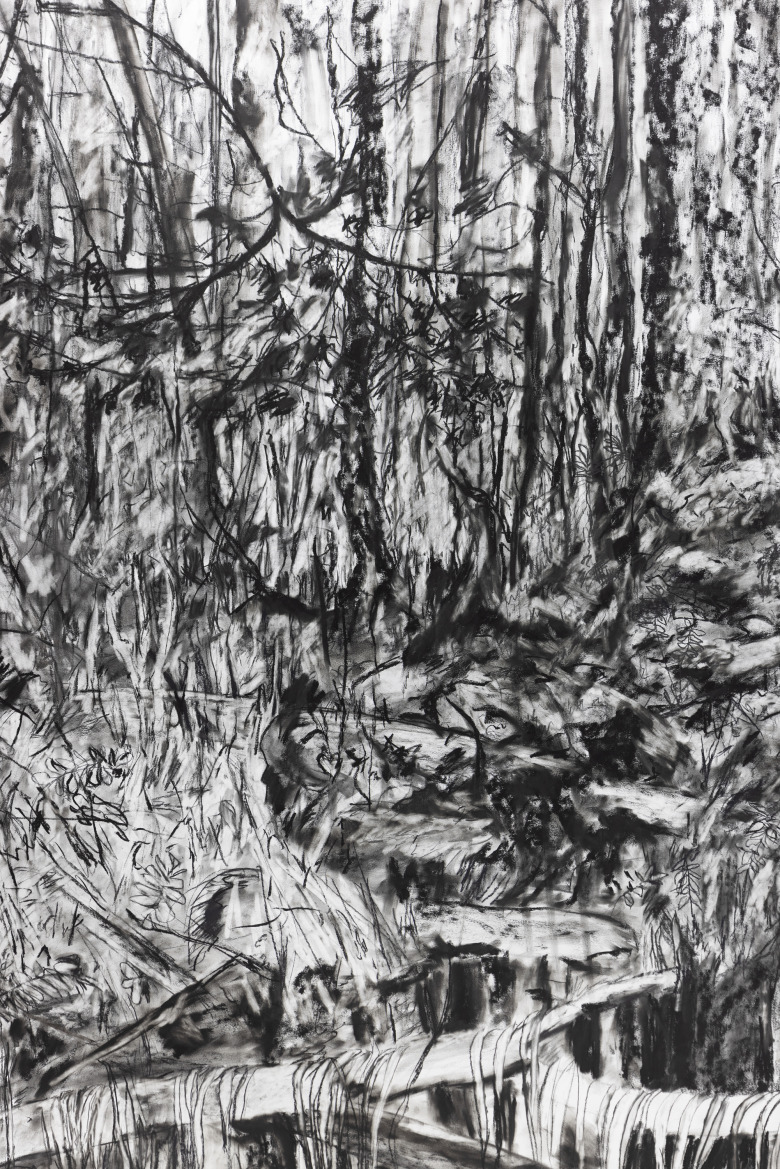
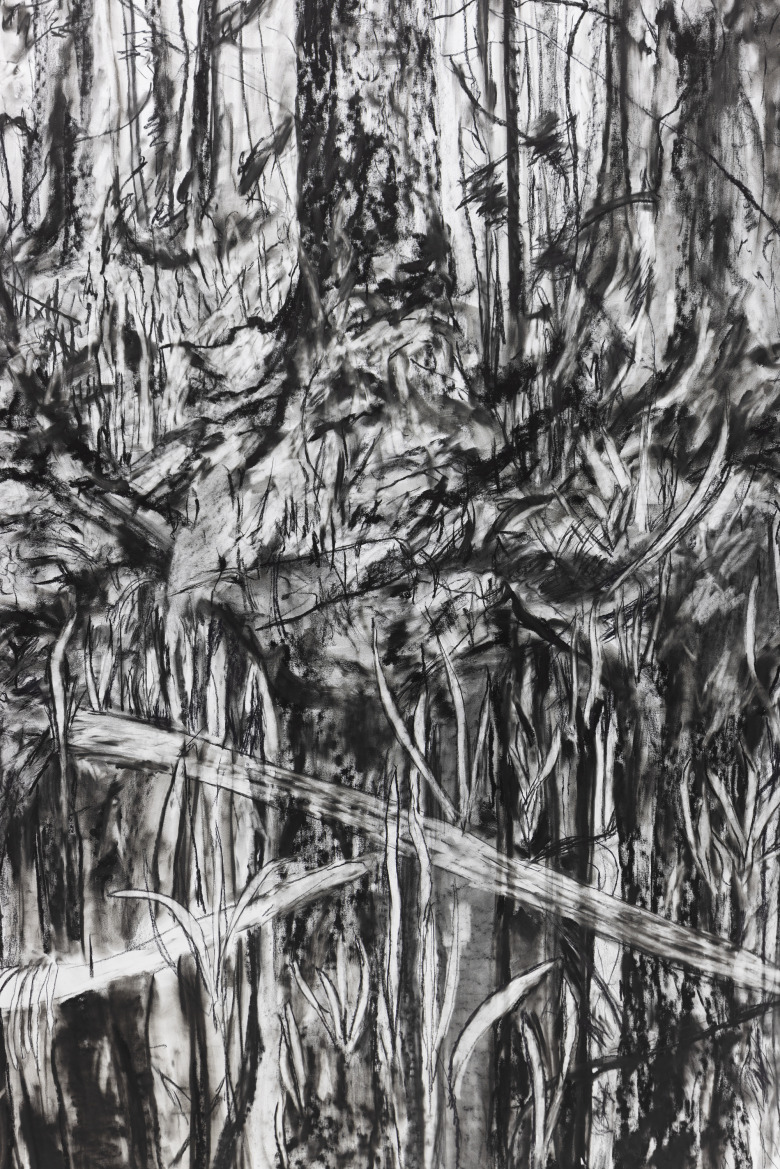
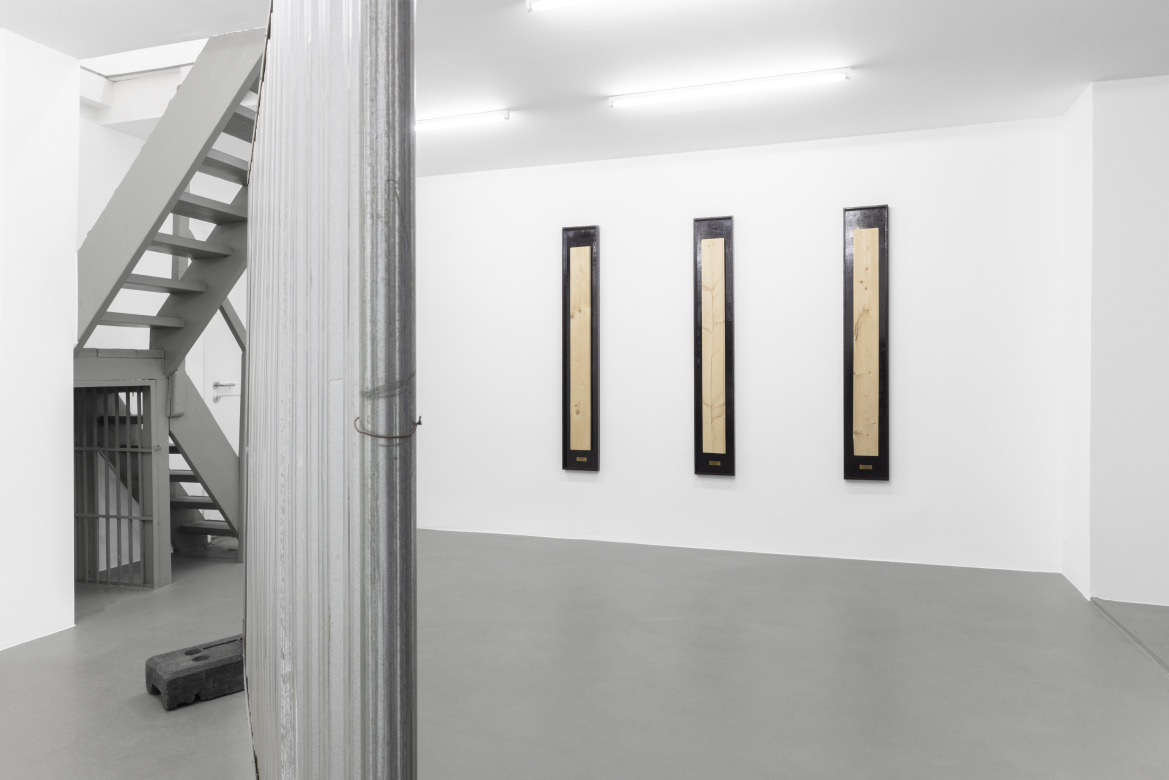
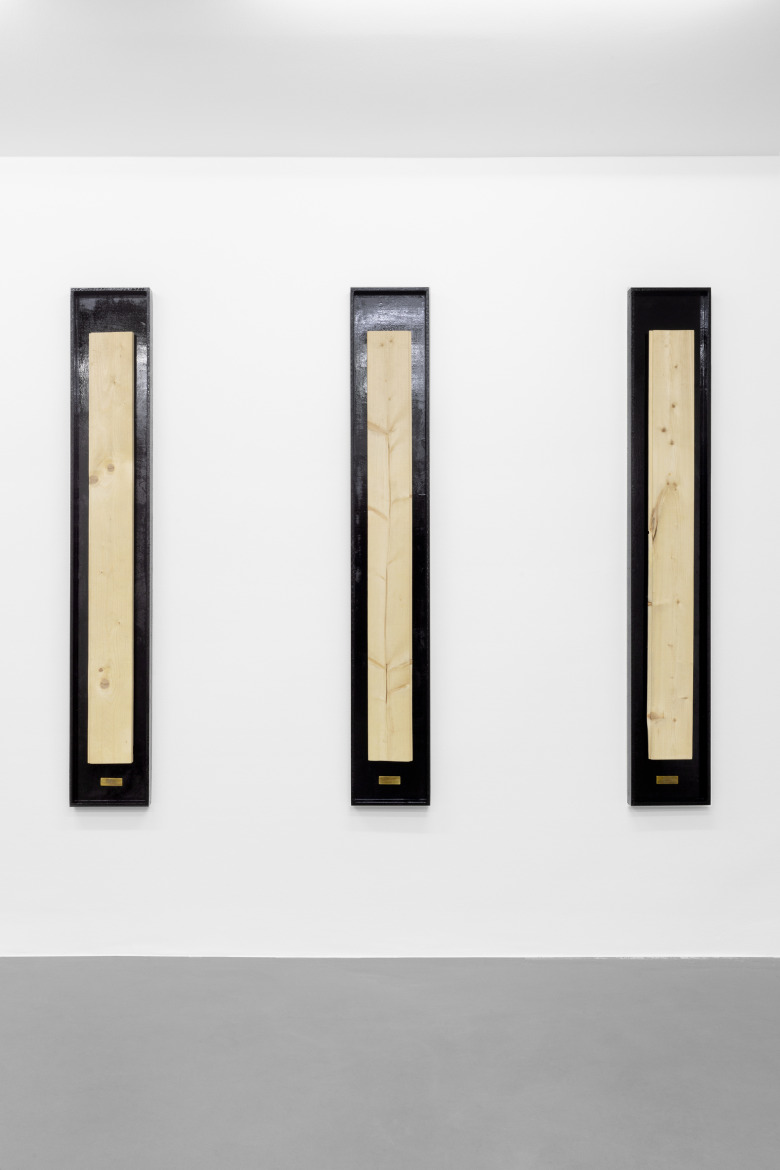
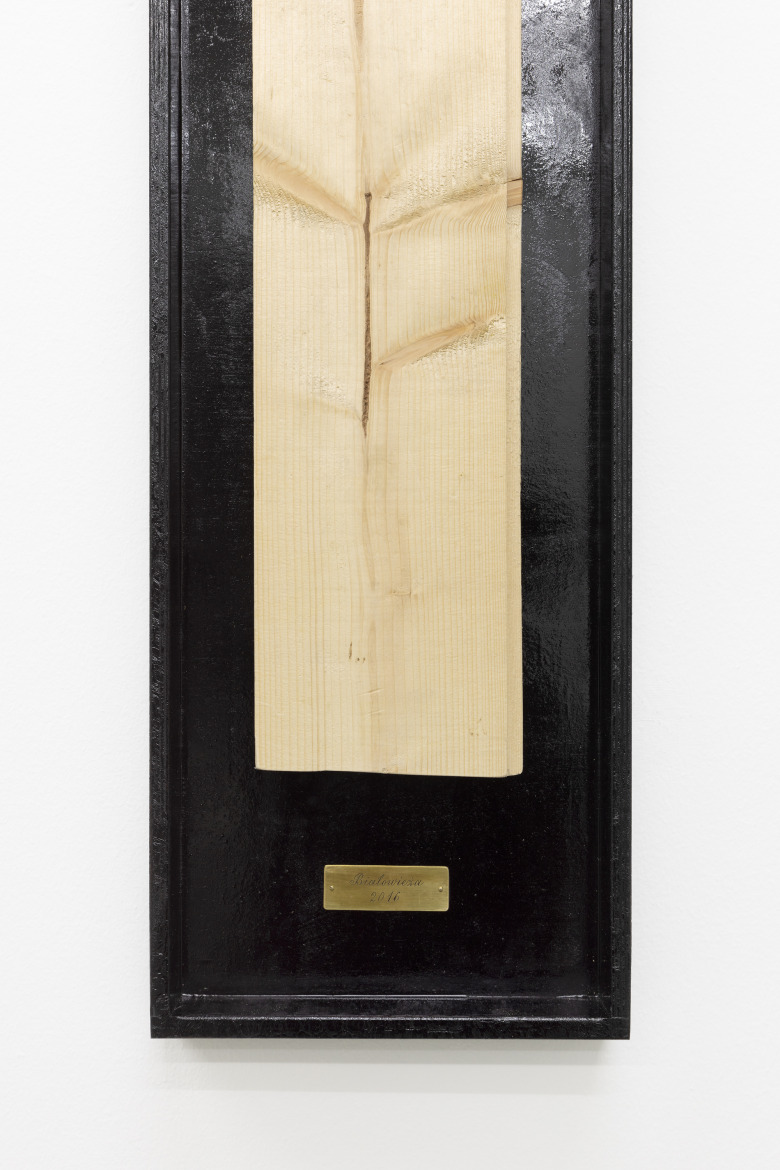
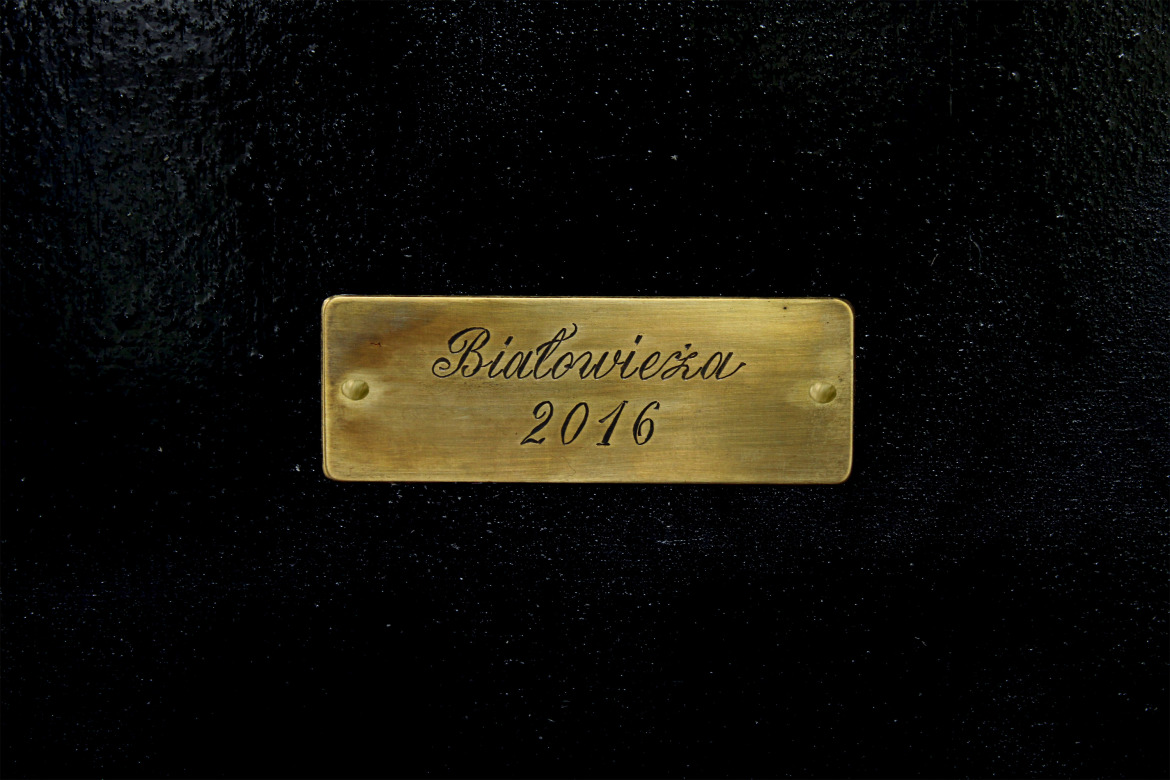
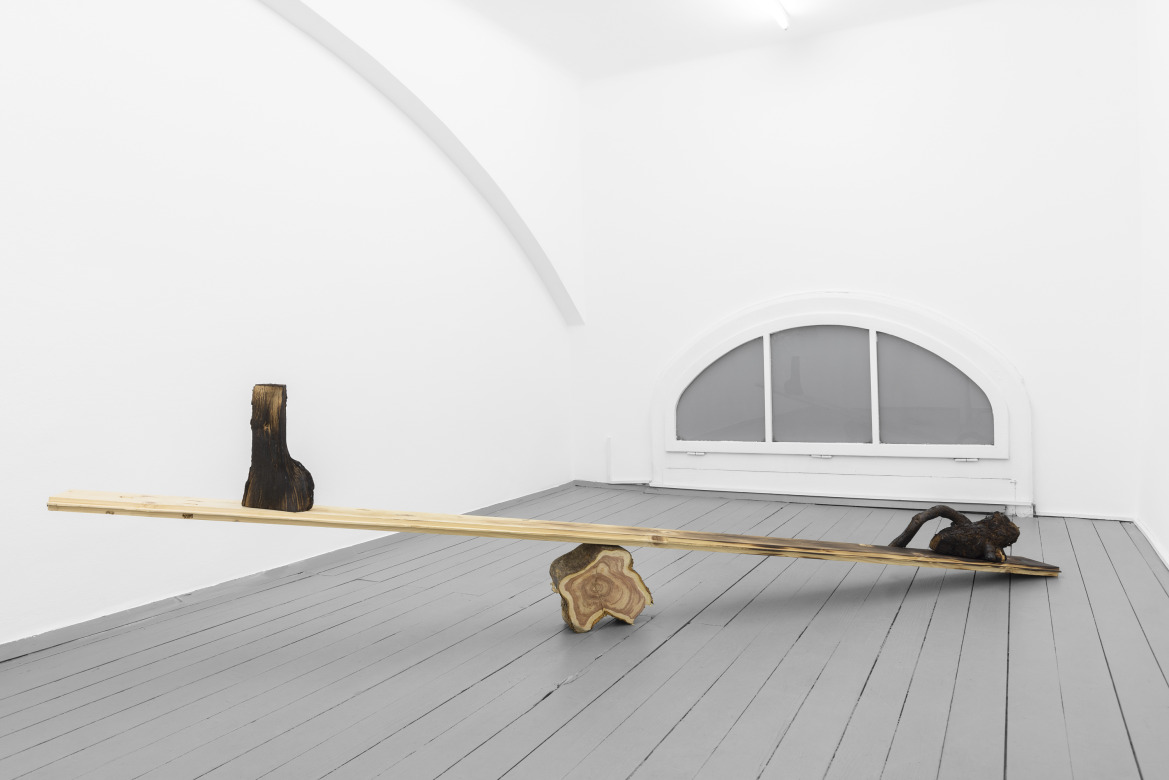








The exhibition marks the next iteration in Kinga Kiełczyńska’s continuous exploration of one of the last remaining primeval forests in Europe: Białowieża, situated in the northeastern region of Poland, stretching across neighbouring Belarus. The concise “environment” comprises of recent as well as recycled works, which focus on the specific location and offer possibilities for interpreting the wild and unknown, drawing on personal narratives and observations.
Upon entering the gallery, viewers encounter a wall-sized work on paper entitled Swamp (after Wajrak) (2019), selected from the series, whose reference points are photographs by journalist and nature conservation activist Adam Wajrak. The piece, intentionally created with charcoal, is loosely attached to a section of metal fencing, reminiscent of barriers erected along construction sites to conceal emerging developments or to newly erected border fences along the eastern Polish border to Belarus. On closer inspection, the seemingly half-abstract, frottage-like composition reveals unruly contours forming trunks, leaves, stems, bushes, and the titular marshy landscape in the lower part.
The bas-relief objects, titled Understory 01-03 (2024), are crafted entirely from wood, which is partially coated in an asphalt- rubber compound (Pol. ‘abizol’). Found in the basement of the artist’s father, it was used for waterproofing surfaces in the past but now remains a toxic oil-based residue, no longer serving any purpose. This narrative forms the backdrop of the series, which was initially created in 2016 and subsequently modified now in order to highlight the journey of the sourced primeval wood. First, it was transformed into floorboards, then framed in a showcase painted with processed petroleum, also known as black gold—a substance derived from the organic remains of plant and animal organisms that serves as a primary component of plastics, a common packaging material.
The exhibition continues in the upstairs space, presenting Tipping Point (2024), a sparse single object resembling a children’s swing typically found in every playground: an oblong board resting on a rough log of wood. On each side of the ramp, there are charred and uneven shapes of wooden trunks, barely balanced as they swing on a log. The ghostly object evokes nostalgia by replicating the vernacular aesthetics of the past, or, ironically, by bearing a resemblance to locally manufactured, environmentally friendly crafts.
Białowieża is one of the few remaining areas of untamed wilderness in Europe. Self-renewing processes shaped the forest, which remained untouched for many centuries, and a variety of plant and animal species inhabited it, creating an environment in which life, mostly non-human, remained largely undisturbed. In Kinga Kiełczyńska’s series on this theme, we’re reminded not only of depictions of the wilderness but also of the conflicts that arose around 2016. Political decisions prompted management interventions in the forest during this period. Consequently, loggers entered the forest, felling and uprooting trees labelled as infested, marking a significant departure from historical preservation. In fact, locals processed and sold these trees, deemed commercially worthless, as firewood or flooring, marking a turning point in the forest’s history.
The artist recalls a time when she lost her way in the forest and her cell phone ran out of power, imagining what the experience of walking outdoors in the past would look like. It can also be related to the notions of “bewilderment” described by Jack Halberstam in his 2020 book Wild Things: The Disorder of Desire.
We can find several expressions there that stem from encounters with an untamed nature that defies man-made systems of morality and normalisation, creating “disorientation” rather than providing tools to monitor the “other”. Halberstam also looks at different ways of understanding humans’ binary relationships with nature, illuminating past attempts to domesticate it and looking at the modalities of the wild and desire through a queer lens.
As explored in the work of Kiełczyńska, Białowieża is also a site of the other—an unknown, unpredictable, and unstable environment in which everything can occur; it can serve as a refuge as well as a danger. The act of recognising the wilderness as something to tame leads to aberrations, or rather disastrous consequences, neglecting the living layers of Białowieża, including the lives of humans. Her long-drawn investigation of the eponymous forest manifests this reflection on our perception and interaction with the natural world.
By revisiting the mythical forest, the artist reflects on the transition from a rural to an urban mentality, a reminder of an early moment in her life. She speculates on alternatives to the formerly agriculturally-oriented society, which has now been transformed into an information society. This transition has led to a binary relationship between humans and nature. This relationship often alienates them from it, viewing nature through the filters of investment potential rather than recognising it as having its own subjectivity or as the driving force of the carbon cycle, which allows the forest to constantly decay, mutate, and revive.
The words articulated in Kinga Kiełczyńska’s Reductionist Art Manifesto (2009), stating, ‘There is too much art on the planet, and it needs to be reduced,’ resonate with the reduced number of works presented in the exhibition. In the approach proposed by Białowieża Chapter 3, the laconic exhibition serves not only as a contemplative space but also as a metaphor for our dystopian present. In this case, the artist’s installation reflects a world where nature, subjected to human control, leads to a disconnect. We can interpret it as a warning, reflecting the reduction of the wild around us. Shall we see it as a cautionary tale or mirror of today’s view of Białowieża?
Romuald Demidenko
Kinga Kiełczyńska’s exploration of the wild in Białowieża, Chapter 3, builds on her previous work showcased at exhibitions like Place of Power during NOT FAIR, Warsaw, and Białowieża: Ebay Meditation Room in Berlin (both 2017).
Together with Ernst Logar, Kiełczyńska is currently a recipient of the On the Road Again grant from the Austrian Ministry of Foreign Affairs and the Austrian Cultural Forums, in cooperation with the Künstlerhaus Vereinigung Wien, investigating the speculative lifestyle of a post-oil society.
→Białowieża: Ebay Meditation Room
Recent Press
→Aleksandra Lisek, Top 10 emergent Polish female artists, Contemporary Lynx, April 16, 2024







